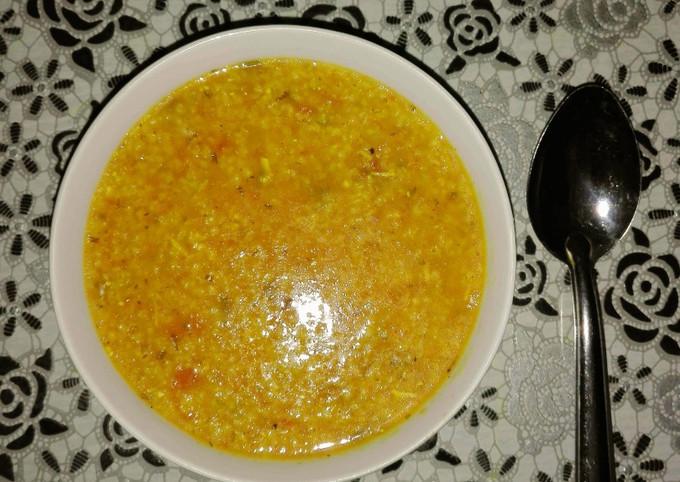
Morocco, known for its rich culinary heritage, boasts a variety of traditional dishes passed down through generations. These recipes reflect centuries of cultural blending, from Amazigh and Arab roots to Andalusian and Sub-Saharan influences. However, as modern lifestyles evolve and urbanization spreads, many old Moroccan dishes are falling into obscurity. Fast food, convenience cooking, and a shift in culinary preferences among the younger generations have pushed some time-honored meals to the edge of extinction. In this article, we revisit these vanishing treasures of Moroccan cuisine, honoring their legacy and flavor.
1. Rfissa with Lamb Fat (Rfissa Bshshama)
This dish is not to be confused with the more popular "Rfissa with chicken and lentils." The older version is made using lamb fat (shshama), whole wheat flour pancakes (msamman or trid), lentils, fenugreek, and a blend of traditional spices like ras el hanout. It was especially prepared during postpartum recovery due to its nutritional richness. Today, this version is rarely seen, as it's labor-intensive and considered too heavy for modern dietary habits.
2. Dchicha with Olive Oil
A humble yet nutritious breakfast meal, Dchicha consists of cracked wheat cooked slowly in water with a pinch of salt and finished with generous amounts of extra virgin olive oil. Once common in rural households, especially among farmers and workers needing energy for the day, it has faded from the urban table due to its simplicity and slow preparation method.
3. Tagoula (Amazigh Cornmeal Porridge)
Tagoula is a Berber dish made from ground corn or barley flour mixed with boiling water to create a thick porridge. It's typically served with buttermilk (lben) or smen (aged butter). Once a daily staple in mountainous regions, this dish has become nearly extinct, replaced by modern cereals and processed breakfast foods.
4. Barley Couscous (Kseksou bel Cha’ir)
This is a rustic variation of the beloved couscous dish, made from barley instead of semolina wheat. Barley couscous is denser and has a nutty, earthy flavor. It was praised for its health benefits, including high fiber content. The challenge of hand-rolling barley couscous and its lengthy cooking time have caused its decline in Moroccan households.
5. Dried Fish Tagine (Hout Meqli or Hout Mhekouk)
Before refrigeration was widespread, Moroccans preserved fish by drying or salting it. These preserved fish were later used in tagines with vegetables, olives, and tomatoes. Although rich in flavor, the strong scent and availability of fresh seafood have rendered this dish nearly forgotten in modern cities.
6. Traditional Zmita
Zmita is a ground mixture of roasted grains like wheat or barley, sesame seeds, nuts, anise, and sometimes medicinal herbs. It is mixed with butter, honey, or olive oil and served in balls or loose form. Handmade zmita had unique regional recipes, often passed down by grandmothers. Now, industrial versions dominate the market, causing traditional recipes to vanish.
7. White Harira (Harira Bida)
Unlike the red tomato-based harira served during Ramadan, this white version is made from barley or wheat, chickpeas, milk, and sometimes herbs. It was considered a winter soup to warm up during cold months. It has largely disappeared due to the popularity of its red counterpart and the effort required to prepare it from scratch.
8. Plain Flour Porridge (A’sida)
A’sida is a basic dish made by boiling flour with water and salt until it thickens. It was a survival food during hard times, served with olive oil or butter. While it may lack the glamour of festive dishes, it held cultural and emotional value, especially in rural and modest communities. Today, it is rarely prepared or remembered.
These disappearing Moroccan dishes are more than food—they are part of Morocco’s intangible heritage. By documenting and reviving them, we can help preserve the flavors and stories of the past for future generations.